Andrija Petrović
Engineering an Efficient Object Tracker for Non-Linear Motion
Jun 30, 2024Abstract:The goal of multi-object tracking is to detect and track all objects in a scene while maintaining unique identifiers for each, by associating their bounding boxes across video frames. This association relies on matching motion and appearance patterns of detected objects. This task is especially hard in case of scenarios involving dynamic and non-linear motion patterns. In this paper, we introduce DeepMoveSORT, a novel, carefully engineered multi-object tracker designed specifically for such scenarios. In addition to standard methods of appearance-based association, we improve motion-based association by employing deep learnable filters (instead of the most commonly used Kalman filter) and a rich set of newly proposed heuristics. Our improvements to motion-based association methods are severalfold. First, we propose a new transformer-based filter architecture, TransFilter, which uses an object's motion history for both motion prediction and noise filtering. We further enhance the filter's performance by careful handling of its motion history and accounting for camera motion. Second, we propose a set of heuristics that exploit cues from the position, shape, and confidence of detected bounding boxes to improve association performance. Our experimental evaluation demonstrates that DeepMoveSORT outperforms existing trackers in scenarios featuring non-linear motion, surpassing state-of-the-art results on three such datasets. We also perform a thorough ablation study to evaluate the contributions of different tracker components which we proposed. Based on our study, we conclude that using a learnable filter instead of the Kalman filter, along with appearance-based association is key to achieving strong general tracking performance.
Beyond Kalman Filters: Deep Learning-Based Filters for Improved Object Tracking
Feb 15, 2024Abstract:Traditional tracking-by-detection systems typically employ Kalman filters (KF) for state estimation. However, the KF requires domain-specific design choices and it is ill-suited to handling non-linear motion patterns. To address these limitations, we propose two innovative data-driven filtering methods. Our first method employs a Bayesian filter with a trainable motion model to predict an object's future location and combines its predictions with observations gained from an object detector to enhance bounding box prediction accuracy. Moreover, it dispenses with most domain-specific design choices characteristic of the KF. The second method, an end-to-end trainable filter, goes a step further by learning to correct detector errors, further minimizing the need for domain expertise. Additionally, we introduce a range of motion model architectures based on Recurrent Neural Networks, Neural Ordinary Differential Equations, and Conditional Neural Processes, that are combined with the proposed filtering methods. Our extensive evaluation across multiple datasets demonstrates that our proposed filters outperform the traditional KF in object tracking, especially in the case of non-linear motion patterns -- the use case our filters are best suited to. We also conduct noise robustness analysis of our filters with convincing positive results. We further propose a new cost function for associating observations with tracks. Our tracker, which incorporates this new association cost with our proposed filters, outperforms the conventional SORT method and other motion-based trackers in multi-object tracking according to multiple metrics on motion-rich DanceTrack and SportsMOT datasets.
FAIR: Fair Adversarial Instance Re-weighting
Nov 15, 2020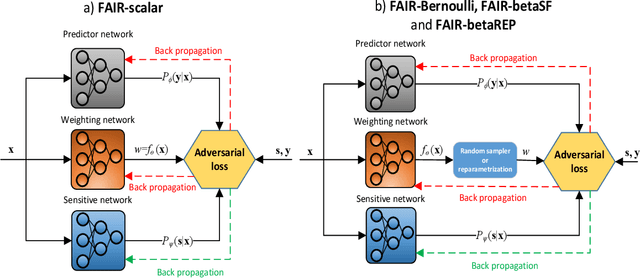
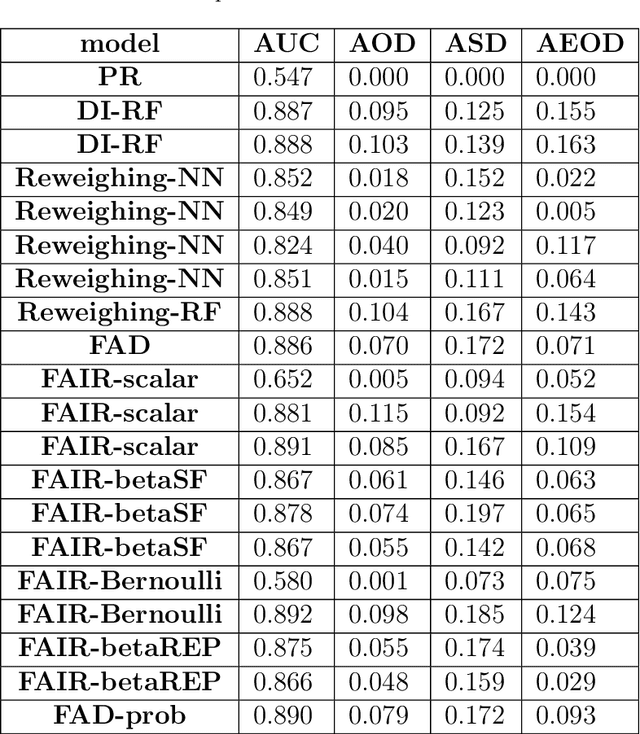
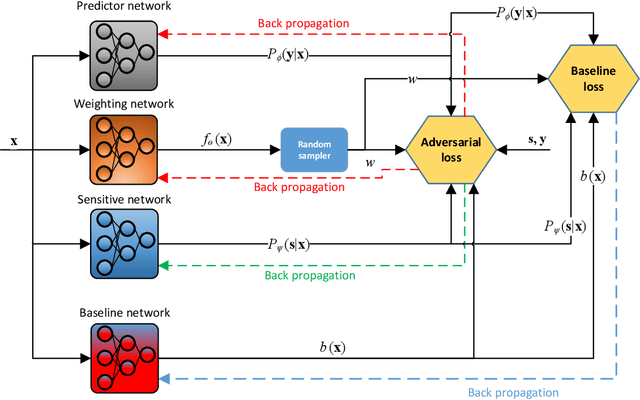
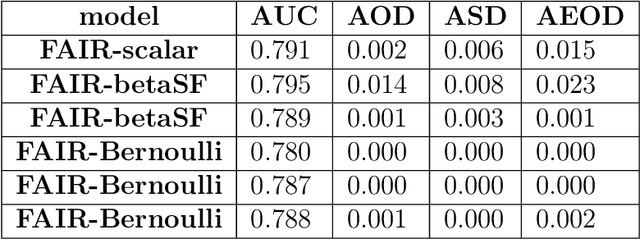
Abstract:With growing awareness of societal impact of artificial intelligence, fairness has become an important aspect of machine learning algorithms. The issue is that human biases towards certain groups of population, defined by sensitive features like race and gender, are introduced to the training data through data collection and labeling. Two important directions of fairness ensuring research have focused on (i) instance weighting in order to decrease the impact of more biased instances and (ii) adversarial training in order to construct data representations informative of the target variable, but uninformative of the sensitive attributes. In this paper we propose a Fair Adversarial Instance Re-weighting (FAIR) method, which uses adversarial training to learn instance weighting function that ensures fair predictions. Merging the two paradigms, it inherits desirable properties from both -- interpretability of reweighting and end-to-end trainability of adversarial training. We propose four different variants of the method and, among other things, demonstrate how the method can be cast in a fully probabilistic framework. Additionally, theoretical analysis of FAIR models' properties have been studied extensively. We compare FAIR models to 7 other related and state-of-the-art models and demonstrate that FAIR is able to achieve a better trade-off between accuracy and unfairness. To the best of our knowledge, this is the first model that merges reweighting and adversarial approaches by means of a weighting function that can provide interpretable information about fairness of individual instances.
Gaussian Conditional Random Fields for Classification
Jan 31, 2019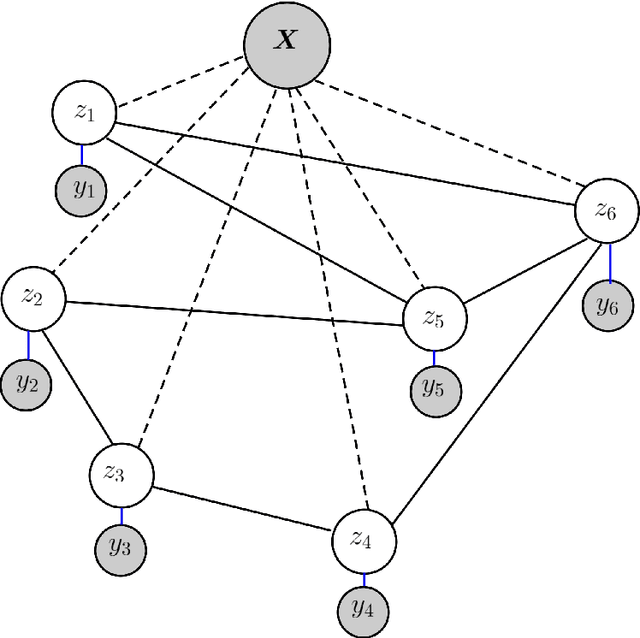
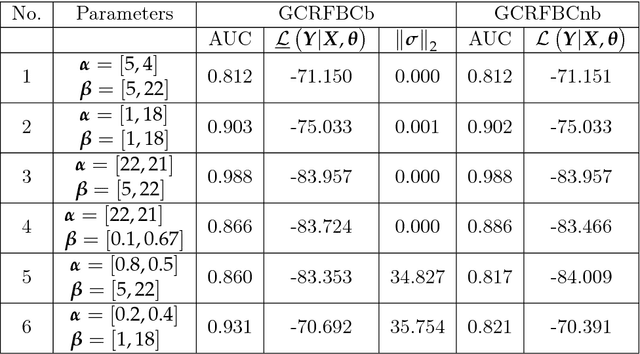
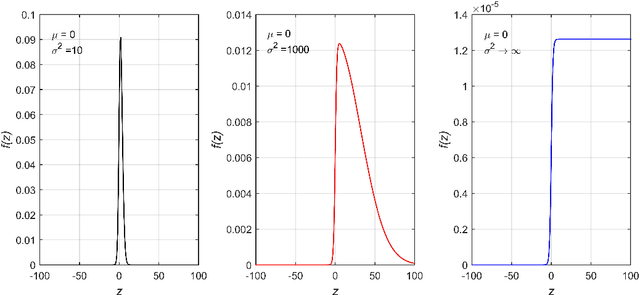
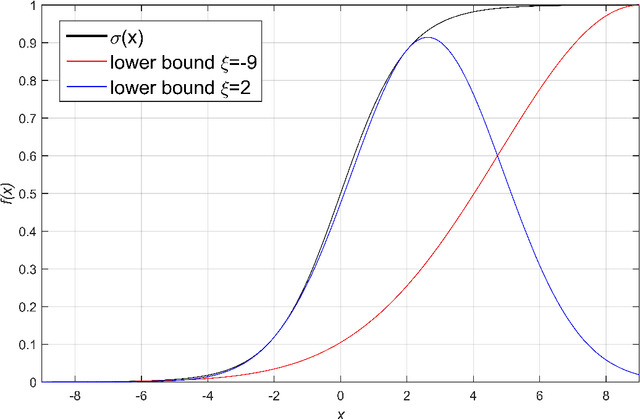
Abstract:Gaussian conditional random fields (GCRF) are a well-known used structured model for continuous outputs that uses multiple unstructured predictors to form its features and at the same time exploits dependence structure among outputs, which is provided by a similarity measure. In this paper, a Gaussian conditional random fields model for structured binary classification (GCRFBC) is proposed. The model is applicable to classification problems with undirected graphs, intractable for standard classification CRFs. The model representation of GCRFBC is extended by latent variables which yield some appealing properties. Thanks to the GCRF latent structure, the model becomes tractable, efficient and open to improvements previously applied to GCRF regression models. In addition, the model allows for reduction of noise, that might appear if structures were defined directly between discrete outputs. Additionally, two different forms of the algorithm are presented: GCRFBCb (GCRGBC - Bayesian) and GCRFBCnb (GCRFBC - non Bayesian). The extended method of local variational approximation of sigmoid function is used for solving empirical Bayes in Bayesian GCRFBCb variant, whereas MAP value of latent variables is the basis for learning and inference in the GCRFBCnb variant. The inference in GCRFBCb is solved by Newton-Cotes formulas for one-dimensional integration. Both models are evaluated on synthetic data and real-world data. It was shown that both models achieve better prediction performance than unstructured predictors. Furthermore, computational and memory complexity is evaluated. Advantages and disadvantages of the proposed GCRFBCb and GCRFBCnb are discussed in detail.
 Add to Chrome
Add to Chrome Add to Firefox
Add to Firefox Add to Edge
Add to Edge